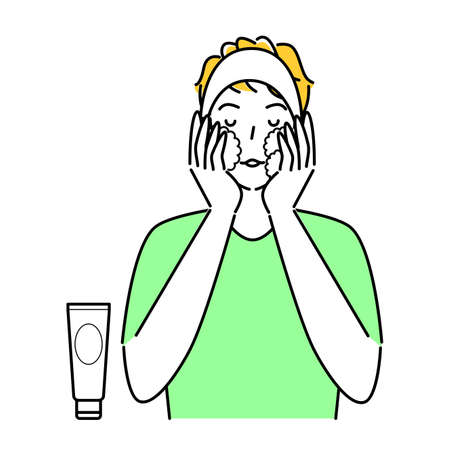Overview of Acne Treatments in the U.S.
Acne is a common skin concern for teens and adults across the United States, leading many to seek effective treatments. In the U.S., acne treatment options generally fall into two main categories: prescription (Rx) and over-the-counter (OTC) products. Understanding the differences between these two approaches is essential for choosing the best solution tailored to your skin type and severity of acne. OTC treatments are widely accessible at drugstores, supermarkets, and online retailers without a doctor’s order. These products typically contain active ingredients like benzoyl peroxide, salicylic acid, or adapalene in lower concentrations. They’re designed for mild to moderate acne and appeal to those looking for convenience and affordability. On the other hand, prescription treatments require evaluation by a healthcare provider, such as a dermatologist or primary care physician. Rx options may include stronger topical medications like tretinoin or clindamycin, oral antibiotics, hormonal therapies, or isotretinoin for severe cases. The U.S. healthcare system emphasizes safe use and monitoring with prescriptions, ensuring patients receive personalized advice and management. Deciding between OTC and prescription treatments often depends on acne severity, previous treatment success, insurance coverage, and personal preferences—factors that play a significant role in American skincare routines.
2. What’s in the Bottle? Common Ingredients Compared
When it comes to fighting acne in the U.S., both over-the-counter (OTC) and prescription treatments offer a variety of active ingredients, each targeting breakouts in specific ways. Understanding what’s inside these products is essential for choosing the right approach for your skin. Let’s break down the most common ingredients and see how they compare:
Key Active Ingredients in Acne Treatments
| Ingredient | OTC or Prescription? | How It Works | Common Brand Names |
|---|---|---|---|
| Benzoyl Peroxide | OTC & Rx (higher strengths) | Kills acne-causing bacteria and reduces inflammation. | Clean & Clear, PanOxyl, Benzaclin (Rx combo) |
| Salicylic Acid | OTC | Unclogs pores by exfoliating dead skin cells. | Neutrogena Oil-Free Acne Wash, Stridex Pads |
| Retinoids (Adapalene, Tretinoin, etc.) | OTC (Adapalene 0.1%) & Rx (higher strengths, Tretinoin) | Speeds up cell turnover, prevents clogged pores. | Differin Gel (OTC), Retin-A (Rx) |
| Topical Antibiotics (Clindamycin, Erythromycin) | Prescription Only | Kills bacteria and reduces inflammation. | Clindagel, Benzamycin (combo with BP) |
| Oral Antibiotics (Doxycycline, Minocycline) | Prescription Only | Treats moderate to severe acne from within. | Doryx, Minocin |
| Sulfur | OTC & Rx formulations | Absorbs oil and unclogs pores. | Mario Badescu Drying Lotion, Rx combinations |
| Azelic Acid | OTC (lower strength) & Rx (15%-20%) | Kills bacteria and gently exfoliates. | The Ordinary Azelaic Acid Suspension 10%, Finacea (Rx) |
Main Differences: OTC vs. Prescription Strengths
Over-the-Counter Treatments:
These are widely available at drugstores and supermarkets across America. They typically feature benzoyl peroxide up to 10%, salicylic acid up to 2%, adapalene 0.1%, sulfur, and lower-concentration azelaic acid. OTC products are ideal for mild breakouts or as a first step before seeking professional help.
Prescription Treatments:
Stronger retinoids like tretinoin or higher-strength adapalene, topical antibiotics, oral antibiotics, and high-percentage azelaic acid require a doctor’s approval. These are reserved for moderate to severe acne or when OTC solutions fall short.
Cultural Note:
In the U.S., it’s common to start with OTC options due to their accessibility and affordability, but dermatologists play a major role in guiding patients toward prescription therapies when necessary.
The Bottom Line: Ingredient Choice Matters
Selecting the right active ingredient often depends on your acne severity, skin type, and treatment goals. While OTC ingredients work well for many Americans with mild acne, prescription options offer targeted power for tougher cases—making knowledge of what’s in your bottle a key part of successful acne care in the U.S.

3. Accessibility and Cost: What’s Easier and More Affordable?
When it comes to treating acne in the U.S., accessibility and cost play a major role in deciding between prescription and over-the-counter (OTC) options. OTC acne treatments are incredibly easy to access; Americans can walk into any drugstore, supermarket, or big box retailer like Walmart or Target and find a wide range of cleansers, spot treatments, and medicated pads—no appointment needed. These products typically range from $5 to $30, making them a budget-friendly choice for most people. You also don’t need insurance or a doctor’s approval, which means you can start treatment the same day you notice a breakout.
On the other hand, prescription acne treatments require a few more steps. First, youll need to schedule an appointment with a healthcare provider—either a primary care doctor or dermatologist. Depending on your insurance, there may be wait times or referral requirements. After the consultation, if a prescription is deemed necessary, your provider will send it to a pharmacy. Here’s where costs can vary dramatically: with good health insurance, copays for prescriptions might be manageable (sometimes as low as $10-$40), but without coverage, topical or oral medications can run from $50 up to several hundred dollars per month. Plus, there’s the added cost of the office visit itself unless your plan covers it entirely.
For many Americans, the convenience and affordability of OTC solutions make them the first line of defense against mild to moderate acne. However, those struggling with severe or persistent cases often find that investing time and money into getting a prescription pays off in results that drugstore products simply can’t match.
4. Effectiveness: Which Treatments Actually Work?
When it comes to battling acne, the real question is: do prescription or over-the-counter (OTC) treatments deliver better results for American consumers? To answer this, we need to look at both clinical studies and real-world experiences. Different types and severities of acne respond differently to various treatments, so understanding what works best for each case is crucial.
Clinical Evidence: OTC vs. Prescription
OTC products often contain ingredients like benzoyl peroxide, salicylic acid, and adapalene. These are proven to be effective for mild to moderate acne by unclogging pores, reducing inflammation, and limiting bacterial growth. Prescription treatments, on the other hand, can include stronger topical retinoids (like tretinoin), antibiotics (topical or oral), and oral medications such as isotretinoin (Accutane). These are designed for more stubborn or severe cases that dont respond well to OTC options.
| Treatment Type | Main Ingredients | Best For | Effectiveness |
|---|---|---|---|
| OTC | Benzoyl Peroxide, Salicylic Acid, Adapalene | Mild to Moderate Acne | Good for many; visible results in 4-8 weeks |
| Prescription Topical | Tretinoin, Clindamycin, Azelaic Acid | Moderate to Severe Acne | More potent; faster and longer-lasting results |
| Prescription Oral | Isotretinoin, Oral Antibiotics, Hormonal Therapy | Severe or Cystic Acne | High effectiveness; suitable for resistant cases |
Everyday Results: What Americans Experience
In practice, most Americans start with OTC options due to accessibility and cost. For mild breakouts and blackheads, these products often suffice if used consistently. However, people with persistent or cystic acne frequently report minimal improvement with OTC products alone and turn to prescriptions for relief. Dermatologists in the U.S. regularly recommend prescription-strength retinoids or combination therapies for tougher cases because they penetrate deeper layers of skin and address multiple causes of acne simultaneously.
Matching Treatment to Acne Severity
- Mild Acne: OTC solutions typically work well; try benzoyl peroxide or adapalene gels.
- Moderate Acne: Combination of OTC and prescription topicals may be needed.
- Severe/Cystic Acne: Prescription oral medications like isotretinoin are most effective—these require close medical supervision due to potential side effects.
The Takeaway
If you have occasional pimples or blackheads, starting with high-quality OTC products makes sense. But if your acne is moderate to severe—or not responding after a few months—it’s time to consult a dermatologist for prescription options that offer proven results in both clinical trials and real-world use across the U.S.
5. Side Effects, Safety, and Cultural Considerations
When comparing prescription and over-the-counter (OTC) acne treatments in the U.S., it’s critical to weigh potential side effects and safety.
Prescription Treatments: Potent but Riskier
Prescription options like retinoids, antibiotics, or hormonal therapies often deliver faster and more noticeable results for moderate to severe acne. However, they come with a higher risk of side effects such as skin irritation, dryness, increased sun sensitivity, and, in some cases, more serious reactions like allergic responses or hormonal imbalances. American patients are advised to follow their dermatologist’s instructions closely and disclose any medical history to avoid interactions.
OTC Treatments: Gentler but Not Without Risks
Common OTC ingredients—benzoyl peroxide, salicylic acid, and adapalene—are generally milder. While these products are easily accessible and less likely to cause severe reactions, misuse (overuse or combining multiple actives) can still lead to redness, peeling, or burning sensations. Americans typically appreciate clear labeling about concentration levels and instructions for safe use.
Safety Tips for U.S. Consumers
- Patch test new products before full application
- Avoid mixing products with overlapping active ingredients unless directed by a professional
- Use sunscreen daily—many acne treatments increase sun sensitivity
- Consult a dermatologist if experiencing persistent irritation or no improvement after several weeks
Cultural Preferences and Concerns in the U.S.
American consumers value efficacy but are increasingly cautious about harsh chemicals and long-term health impacts. There is a growing trend toward “clean” beauty—products free from parabens, sulfates, and artificial fragrances. Cruelty-free and vegan certifications also influence purchasing decisions. On the flip side, there is skepticism around unregulated “miracle cures” or imported products lacking FDA approval. Overall, safety transparency and clinical backing are top priorities when choosing between prescription and OTC acne solutions in the United States.
6. Choosing What’s Right for You—The American Approach
Making the best choice between prescription and over-the-counter (OTC) acne treatments often comes down to understanding your unique skin needs and the realities of daily life in the U.S. With a fast-paced lifestyle and easy access to both drugstore aisles and telehealth services, Americans have more options than ever—but that can also make the decision overwhelming. Here’s how to navigate it like a pro.
Start with Self-Assessment
First, evaluate your acne severity honestly. Mild breakouts or occasional pimples? OTC products with benzoyl peroxide or salicylic acid might be all you need. These are widely available at big-box stores like Target or Walgreens, often with affordable generic versions. If you’re seeing persistent cysts, nodules, or scarring, your case is likely moderate to severe—and may require prescription-level care.
Factor in Lifestyle and Budget
Americans juggle busy schedules and insurance complexities. OTC treatments offer flexibility: no doctor’s appointment needed, easy to integrate into daily routines, and you control the budget. Prescription options might involve co-pays or prior authorizations, but they’re generally more potent and tailored to you—important if you’ve tried OTC without results.
When to See a Dermatologist
If your acne isn’t improving after 8–12 weeks of consistent OTC use, it’s time for professional help. In the U.S., dermatologists can be found through insurance networks or direct-pay clinics. Teledermatology is booming—virtual consults save time while still offering expert guidance. Don’t wait if you notice pain, deep cysts, dark spots (post-inflammatory hyperpigmentation), or emotional distress; these are clear signals to seek expert intervention.
Culturally Relevant Tips
Embrace America’s proactive health culture: document your skin changes with phone photos, bring a list of products you’ve tried when visiting a doctor, and don’t hesitate to ask about combination therapies (like topical + oral treatments). Many providers understand cultural sensitivities around skin tone and scarring—advocate for your concerns.
The Bottom Line
The American approach blends independence with expertise. Start with OTC if your acne is mild and manageable; escalate to prescriptions if things aren’t improving or symptoms worsen. Ultimately, the best treatment is one you’ll stick with—so choose what fits your lifestyle, budget, and comfort level, and reach out for medical advice when in doubt.


